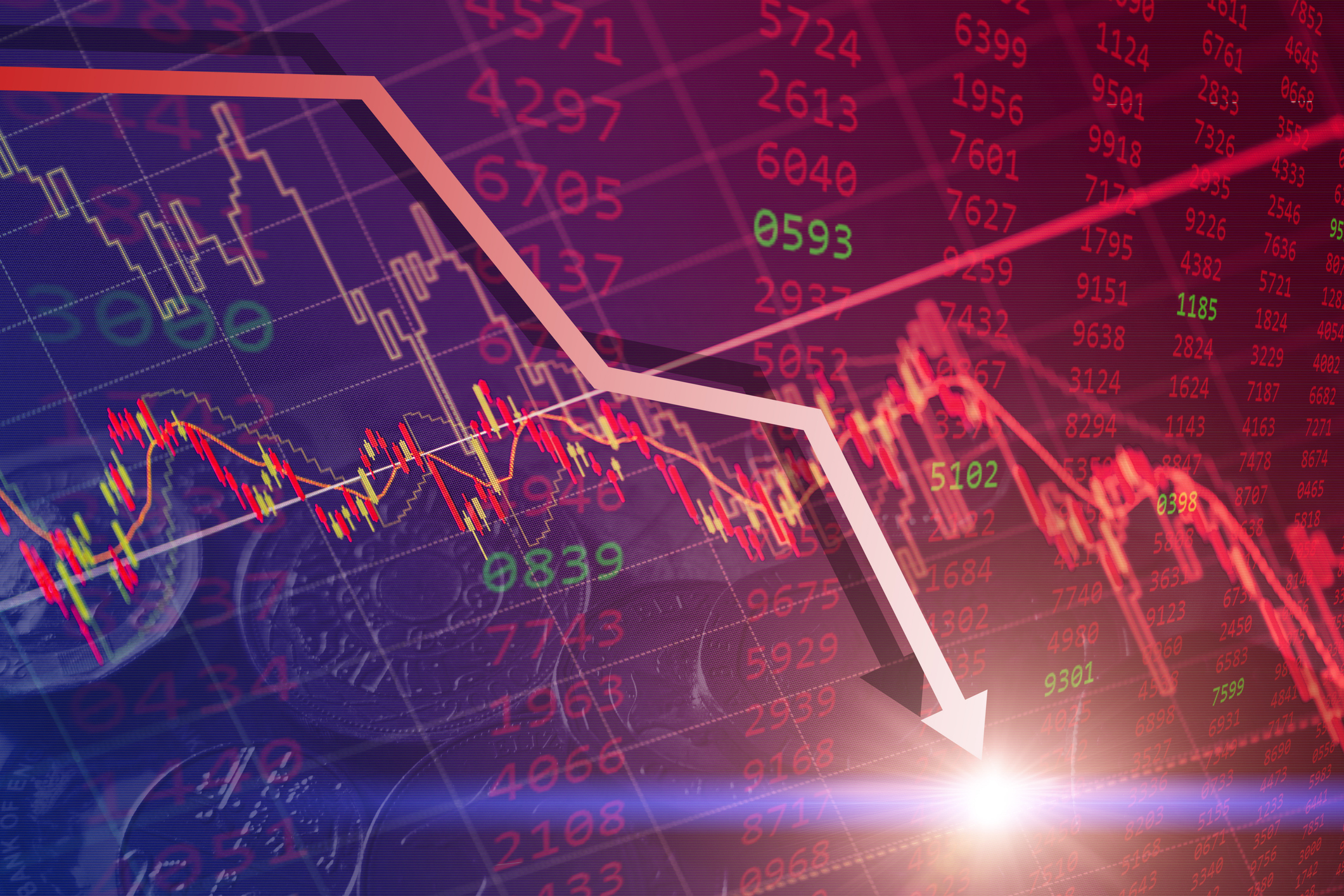7 Top Funds from T. Rowe Price
Consistency and a focus on the long haul are hallmarks of this 76-year-old firm.

When Thomas Rowe Price Jr. founded his eponymous investment firm in 1937, he had just four associates. Today, the Baltimore company has 5,295 employees worldwide and $574 billion under management.
But Price's core investment philosophy — a focus on a long-term horizon, rigorous in-house research and an eye toward risk management — endures. So does the culture of an old investment partnership, where "investors" (as the firm's analysts and portfolio managers are known within Price's offices) work together to make sure clients do well. "When the client succeeds, T. Rowe Price succeeds," is one company belief.
It's this collaborative culture that helps Price funds stay on an even keel. Most T. Rowe fund managers rely on the army of Price analysts — 185 worldwide — to home in on good investing ideas. The process has turned out good results. Nearly half of the fund's 112 portfolios boast five-year annual returns that rank among the top 25% of their respective fund categories.
From just $107.88 $24.99 for Kiplinger Personal Finance
Become a smarter, better informed investor. Subscribe from just $107.88 $24.99, plus get up to 4 Special Issues

Sign up for Kiplinger’s Free Newsletters
Profit and prosper with the best of expert advice on investing, taxes, retirement, personal finance and more - straight to your e-mail.
Profit and prosper with the best of expert advice - straight to your e-mail.
Price (the man) is considered by many to be the father of growth investing. He laid out the strategy in a May 1939 article in Barron's entitled "Picking 'Growth' Stocks." The firm's first mutual fund, launched in 1950, was T. Rowe Price Growth Stock (symbol PRGFX). The fund still operates; over the past 20 years, it has returned 9.2% annualized, outpacing Standard & Poor's 500-stock index by an average of 0.7 percentage point per year.
But Price (the firm) is hardly just a growth shop today. Its many offerings stretch across all investing styles, from stock funds and bond funds to target-date and asset-allocation funds. And it's worth noting that many Price managers resisted the allure of skyrocketing technology stocks in the late 1990s. Their reluctance to pay obscenely high prices for Internet and other tech novas may have hurt relative returns in the '90s, but it helped the funds sidestep the worst of the tech-stock collapse that followed.
Finding T. Rowe Price's best funds wasn't easy, simply because there are so many strong contenders. Here, however, are the top seven.
T. Rowe Price Blue Chip Growth (TRBCX) Since its 1993 launch, Blue Chip Growth, under manager Larry Puglia, has earned a 9.2% annualized return by buying large, growing companies at reasonable prices (all returns are through January 18). Puglia's record outpaces the S&P 500 by an average of 0.9 percentage point per year. His strategy is to find market leaders poised for above-average earnings growth with healthy balance sheets and seasoned executives at the helm. Lately, that has meant an emphasis on technology companies; at last report, 33% of the fund's assets were invested in that sector. Amazon.com, Google, eBay and Priceline.com, for instance, are among the top ten holdings.
T. Rowe Price Capital Appreciation (PRWCX) Balanced funds — portfolios that hold stocks and bonds — are crafted to emphasize steadiness and growth. Capital Appreciation, which currently holds 60% of its assets in stocks, delivers both. The fund's five-year annualized return of 7.3% outpaces the S&P 500 by an average of 2.7 percentage points per year, and it was earned with 20% less volatility than the index to boot. On the stock side, David Giroux, manager since June 2006, can invest in companies of any size, and he likes a good value. Top holdings include Thermo Fisher Scientific, Pfizer and Danaher. Giroux also sells covered-call options — a strategy that trades away appreciation potential in return for more income — on about one-fourth of the fund's stocks. The options pay a premium, which provide the fund with extra income. On the fixed-income side, Giroux holds mostly high-yielding junk bonds. With interest rates so low, Giroux sees little value in most bonds. That's one reason he's let the fund's cash reserves rise to about 14% of assets.
T. Rowe Price Small-Cap Value (PRSVX) You may not recognize many names in Small-Cap Value's portfolio. Manager Preston Athey favors undiscovered companies and when he buys, he holds. The fund, a member of the Kiplinger 25, has a turnover ratio of just 6%, implying that Athey holds a stock for an average of 17 years. The typical small-company fund has a turnover ratio of 61%. Athey first bought shares in South Dakota conglomerate Raven Industries in 1992. More than 20 years, later, he still holds the stock in the portfolio — it's one of the fund's ten biggest positions. Come June 2014, Athey will retire after running the fund for nearly 23 years. At that point, J. David Wagner, a 12-year Price veteran and the fund's associate manager since 2005, will take over.
T. Rowe Price New Horizons (PRNHX) Manager Henry Ellenbogen has proved adept at managing this mammoth fund, which focuses on small companies. Since he became manager in March 2010, the fund has earned 20.1% annualized, beating the Russell 2000 small-company index by 6.5 percentage points per year. Like other Price managers, Ellenbogen relies on a research team for ideas. He also hands over small slices of the $9.7 billion portfolio (each about 5% to 8% of the total) to Kris Jenner, manager of Price Health Sciences Fund, and to Mike Sola, a tech analyst. The trio hunt for young, fast-growing companies with good management teams and strong balance sheets. The average holding has a market value of $2.3 billion — hardly small. One reason the fund owns a huge chunk of midsize-company stocks (42% of assets, according to Morningstar) is that Ellenbogen will hold on to a good investment, even as it grows. Take FMC Technologies, an energy-services company. Since New Horizons first bought the stock in 2002, the company has grown from a relative runt to a firm with a market capitalization of $11 billion. The larger companies provide stability to New Horizons — it has been 10% less volatile than the typical small-company fund.
T. Rowe Price Emerging Markets Stock (PRMSX) A member of the Kiplinger 25, this fund navigates the risky but rewarding waters of stocks in developing markets. Manager Gonzalo Pangaro, at the helm since 2008, favors firms with a leading or improving market position or an attractive market niche, plus seasoned execs and stable or improving earnings. Pangaro is betting big, too, on the growth of the middle-class consumer in developing nations. Two South Korean firms that are benefiting from this theme—Samsung Electronics (its stock has jumped 44% over the past year) and LG Household & Health Care (up 33%) — are among the fund's top holdings.
T. Rowe Price Health Sciences (PRHSX) Manager Kris Jenner has a knack for finding small companies with promising futures (nearly half the portfolio sat in small to midsize companies at last report). Top-five holding Pharmacyclics, for instance, is a midsize biotech with a single product, a drug that treats multiple lymphomas and different kinds of leukemia. The stock has quadrupled over the past year. Jenner brings medical expertise to the fund: He's a former general-surgery resident at Johns Hopkins Hospital. He and his team of five analysts divide the health sector into two buckets: therapeutic companies, which make drugs or devices (for example, Merck and Covidien), and service companies, such as insurers or dialysis providers (UnitedHealth Group and Fresenius Medical Care).
T. Rowe Price Media & Telecommunications (PRMTX) This fund's five-year annualized return of 11.0% bests 99% of its peers (funds that invest in cable TV companies, phone-service providers, equipment makers, broadcasters and other communications-related companies). The man responsible for that record — Dan Martino, manager since 2009builds a portfolio of 50 to 60 stocks by betting on the best ideas generated by his team of more than 20 analysts. Half of the fund's assets sit in stable, attractively priced companies with strong balance sheets and durable businesses, including cable-services companies (such as Comcast), wireless-services providers (Vodafone) and wireless-tower companies (American Tower). The other half is invested in fast-growing media (Discovery Communications) and tech firms (Apple). "Other tech funds may have more of a growth bias," says Martino. "I try to have some balance" between growth and stability.
Kiplinger's Investing for Income will help you maximize your cash yield under any economic conditions. Subscribe now!
Profit and prosper with the best of Kiplinger's advice on investing, taxes, retirement, personal finance and much more. Delivered daily. Enter your email in the box and click Sign Me Up.

Nellie joined Kiplinger in August 2011 after a seven-year stint in Hong Kong. There, she worked for the Wall Street Journal Asia, where as lifestyle editor, she launched and edited Scene Asia, an online guide to food, wine, entertainment and the arts in Asia. Prior to that, she was an editor at Weekend Journal, the Friday lifestyle section of the Wall Street Journal Asia. Kiplinger isn't Nellie's first foray into personal finance: She has also worked at SmartMoney (rising from fact-checker to senior writer), and she was a senior editor at Money.
-
 The Santa Claus Rally Officially Begins: Stock Market Today
The Santa Claus Rally Officially Begins: Stock Market TodayThe Santa Claus Rally is officially on as of Wednesday's closing bell, and initial returns are positive.
-
 How to Leave Different Amounts to Adult Children Without Causing a Rift
How to Leave Different Amounts to Adult Children Without Causing a RiftHere’s how to leave different amounts to adult children without causing a family rift.
-
 My Retirement Learning Curve, 1 Year In
My Retirement Learning Curve, 1 Year InA retiree checks in with what they wish they knew early on and what they've changed about their plan one year in.
-
 The Santa Claus Rally Officially Begins: Stock Market Today
The Santa Claus Rally Officially Begins: Stock Market TodayThe Santa Claus Rally is officially on as of Wednesday's closing bell, and initial returns are positive.
-
 'Humbug!' Say Consumers, Despite Hot GDP: Stock Market Today
'Humbug!' Say Consumers, Despite Hot GDP: Stock Market Today"The stock market is not the economy," they say, but both things are up. Yet one survey says people are still feeling down in the middle of this complex season.
-
 Stocks Rise to the Spirit of the Season: Stock Market Today
Stocks Rise to the Spirit of the Season: Stock Market TodayInvestors, traders and speculators are beginning to like the looks of a potential year-end rally.
-
 Nasdaq Leads as Tech Stages Late-Week Comeback: Stock Market Today
Nasdaq Leads as Tech Stages Late-Week Comeback: Stock Market TodayOracle stock boosted the tech sector on Friday after the company became co-owner of TikTok's U.S. operations.
-
 Cooler Inflation Supports a Relief Rally: Stock Market Today
Cooler Inflation Supports a Relief Rally: Stock Market TodayInvestors, traders and speculators welcome much-better-than-hoped-for core CPI data on top of optimism-renewing AI earnings.
-
 Nasdaq Sinks 418 Points as Tech Chills: Stock Market Today
Nasdaq Sinks 418 Points as Tech Chills: Stock Market TodayInvestors, traders and speculators are growing cooler to the AI revolution as winter approaches.
-
 Stocks Chop as the Unemployment Rate Jumps: Stock Market Today
Stocks Chop as the Unemployment Rate Jumps: Stock Market TodayNovember job growth was stronger than expected, but sharp losses in October and a rising unemployment rate are worrying market participants.
-
 Stocks Struggle Ahead of November Jobs Report: Stock Market Today
Stocks Struggle Ahead of November Jobs Report: Stock Market TodayOracle and Broadcom continued to fall, while market participants looked ahead to Tuesday's jobs report.